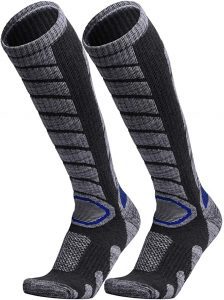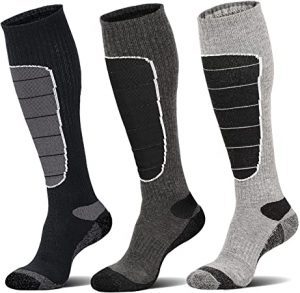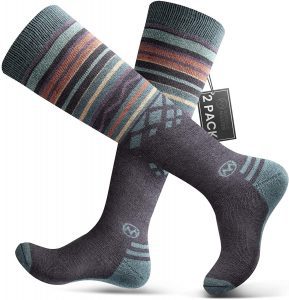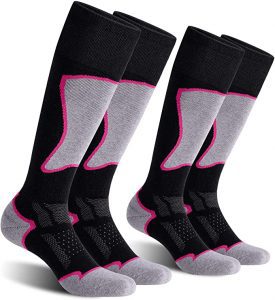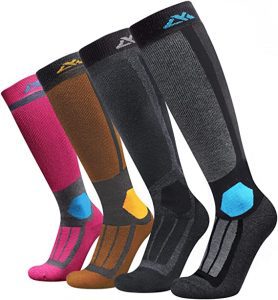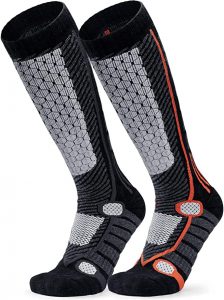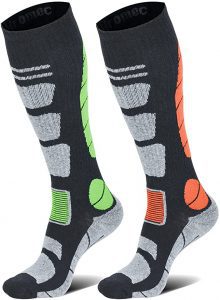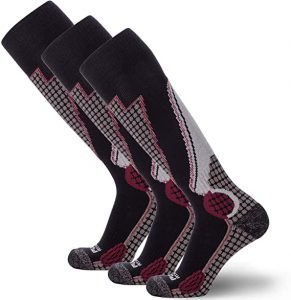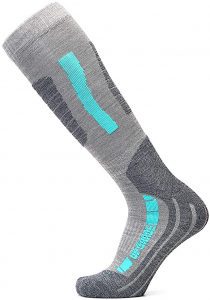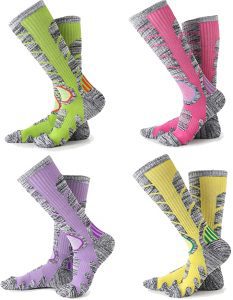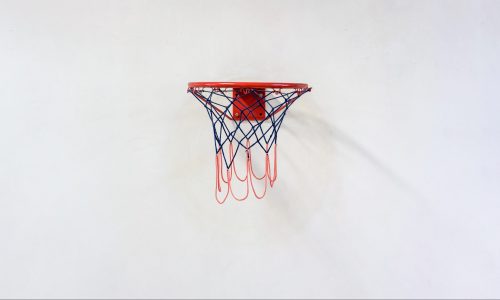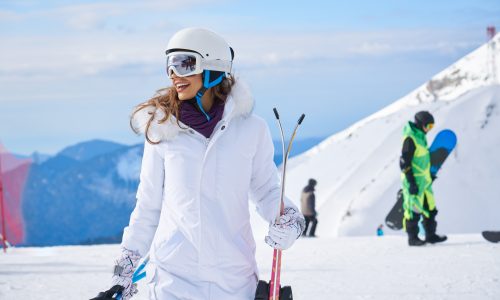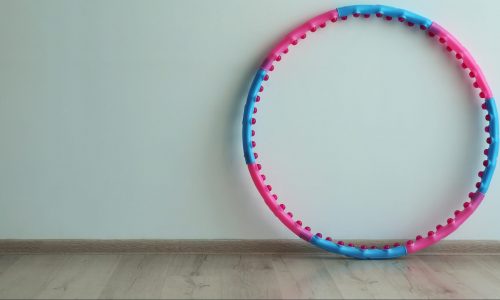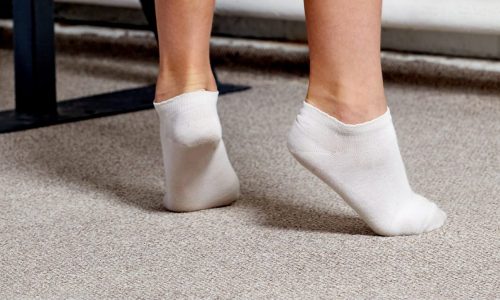The Best Ski Socks
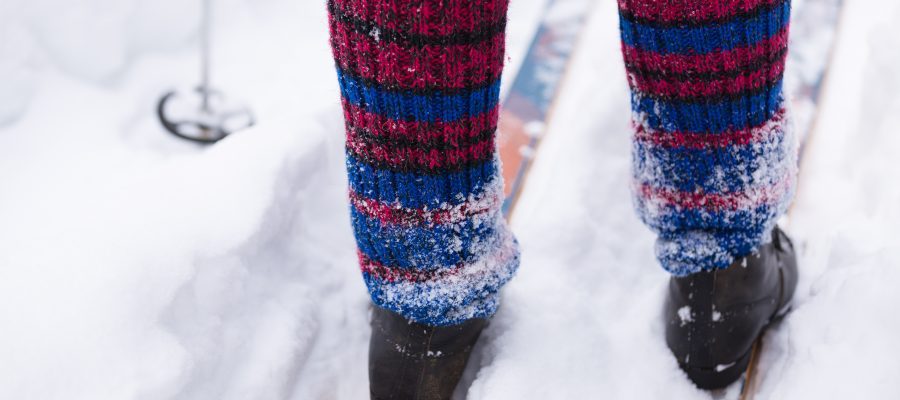
Our Review Process
Don't Waste Your Money is focused on helping you make the best purchasing decision. Our team of experts spends hundreds of hours analyzing, testing, and researching products so you don't have to. Learn more.
Our Picks For The Top Ski Socks
- 1. WEIERYA Outdoor Performance Ski Socks, 2-Pack
- 2. Hylaea Merino Wool Men’s Ski Socks, 3-Pack
- 3. OutdoorMaster Over-The-Calf Merino Wool Ski Socks, 2-Pack
- 4. AKASO Thermolite Technology Men’s Wool Ski Socks
- 5. CS CELERSPORT No-Slip Thermal Ski Socks, 2-Pack
- 6. TSLA Breathable Calf-Compression Snowboard Socks, 2-Pack
- 7. Hromec Knee-High Merino Wool Ski Socks, 2-Pack
- 8. PureAthlete Arch Support Men’s Ski Socks, 3-Pack
- 9. UGUPGRADE High Performance Merino Wool Ski Socks
- 10. GUUMOR Winter Performance Calf Ski Socks, 4-pack
Constructed from a cotton/spandex blend, these ski socks receive high marks in the comfort category. Their ergonomic design also means you'll get support where you need it most. Additionally, outdoor enthusiasts will appreciate that the socks are thermal regulating, keeping your feet the perfect temperature no matter what activity you're participat...
Most VersatileIn addition to skiing, these socks are perfect for snowboarding, sledding, mountain climbing and even sky diving.
With a fit that suits men, women and youth, these merino wool socks will give you comfort combined with moisture-wicking technology. The material is designed to resist odor buildup and keep your feet both dry and breathable. A thick terry loop added to the forefoot, heel and toe will keep friction to a minimum while also absorbing shock while you'r...
For Serious SkiiersBuilt-in shock absorbers will help keep your feet safe even during the most intense skiing sessions.
These ski socks reach above the calf and feature a no-slip cuff to keep them from sliding down inside your boots. They're lightweight, breathable and itch-free. You can even get the socks in one of four colors: gray, pink, blue or black.
Won't Slip DownSuperior warmth is what you'll get from these ski socks, which are made using a high-quality wool blend.
Keep your feet warm and toasty with these ski socks while you enjoy the great outdoors during the colder winter months. Each pack contains two pairs of socks that feature moisture-wicking capabilities and added cushioning to prevent blisters. They're also seamless, so they won't irritate sensitive skin.
Most AffordableYou won't have any trouble sticking to your extra-curricular activity budget when you go with these ski socks.
Buying Guide
Skiing is a fun, healthy sport that lets you enjoy the great outdoors even during the chilliest of months. But your body temperature heats up during physical activity, so it can be easy to forget the frigid temperatures around you.
Of course, when you’re skiing, your body isn’t directly exposed to the elements. You bundle up in layers of clothing designed to protect your body tissue. But one area that can easily be forgotten is your feet. You’ll want socks that properly insulate your legs, ankles, feet and toes against the frigid temperatures without inhibiting movement.
Ski socks are designed specifically to give you protection from the elements without sacrificing your skill on the slopes. But it’s also important to make sure your chosen sock fits comfortably inside your ski boot. That’s why, if possible, you should pinpoint your favorite type of ski sock before you start shopping for ski boots.
There are different types of material used to make ski socks, but typically you’ll see merino wool or polyester. Wool is known for its warming capabilities, but in recent years, polyester and polyester-nylon blends have become increasingly popular in apparel designed for warmth. Some people are allergic or sensitive to wool, and polyester fabrics can provide the same breathability and moisture-wicking properties.
MORE: The Best Battery-Heated Socks
The key property in both merino wool and polyester is that both fabrics retain their warming properties even when wet. That’s crucial for socks you’ll be wearing in the snow. It’s important to avoid getting caught up in the thickness of the sock. With the right fabric, a thinner build will be fine. Thicker socks can inhibit circulation, especially when your foot is tucked inside a snug-fitting boot, which is another reason it’s important to try on your socks with your ski boots before you hit the slopes.
What to Look For
- Although your socks might not be very visible with your ski pants and boots, it can be fun to look for a pair with patterns. You’ll be able to continue to wear them after your ski trip and show off your fun style.
- As valuable as a thick pair of socks can be for warmth, it’s important to look for a thinner sock that builds in warming properties. A merino wool or polyester sock that’s midweight will keep your feet and legs warm without crowding your foot when it’s tucked inside your boot.
- Ski socks often use a style of knitting known as a terry loop, which creates reinforced stitching in certain areas. This will typically be concentrated on impact-typical areas like toes, heels and shins. This gives you a little extra protection if your foot runs into an obstacle while you’re skiing. But with this type of stitching, you’ll also get more structure in your sock and better support for it staying upright.
- Odor can be a problem with warmer socks. Look for a material that’s designed to keep that odor to a minimum.
- Although socks are typically separated into men’s and women’s sizes and styles, women can wear men’s socks and vice versa. It’s just important to know how to convert the sizes.
- For a sustainable solution, look for ski socks that are made from recyclable materials.
- You’ll likely want to thoroughly clean your socks between uses. Most ski socks should be machine washable, but check the care instructions before buying to make sure.
- Ski socks are typically knee-length to ensure your calf is fully covered while you’re skiing. Since the length differs, look to make sure your socks will land where you want them to. This is especially important if you’re more petite or taller than average.

